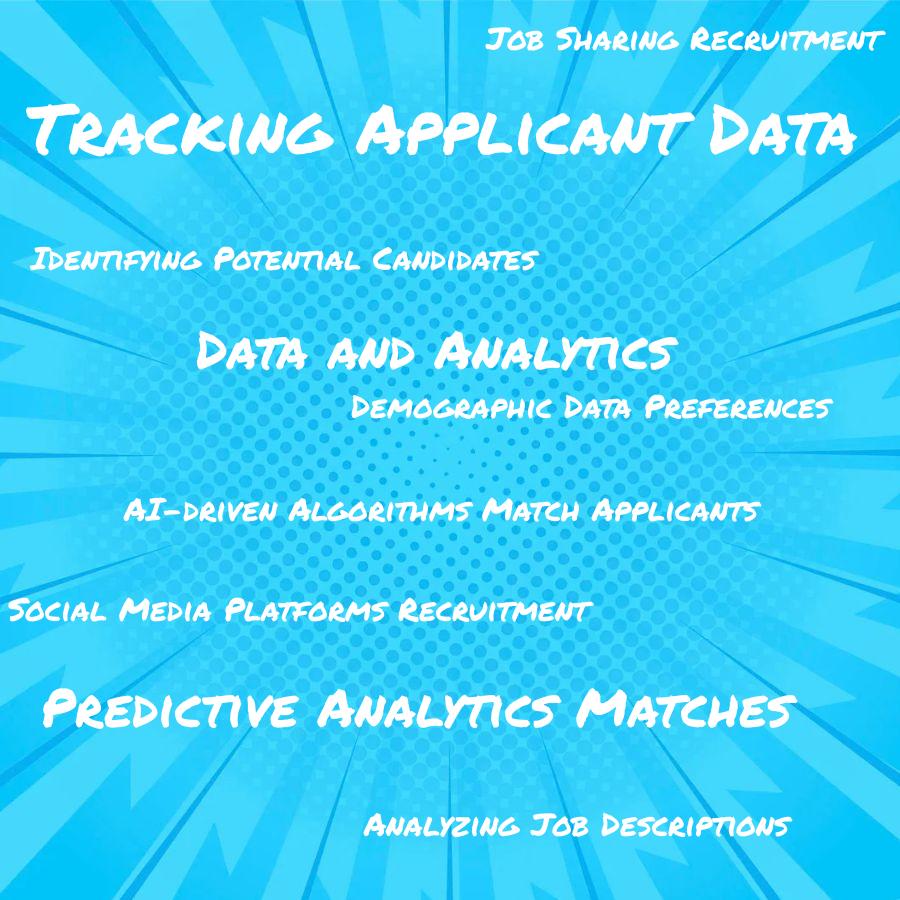Data and analytics can be used to improve job sharing recruitment efforts by tracking key metrics such as job posting click-through rates, response times, number of applicants, and conversion rates. This information can then be analyzed to identify areas for improvement in the recruitment process and develop strategies to optimize job sharing opportunities for both employers and applicants.
Data and analytics can be an invaluable tool for improving job sharing recruitment efforts. By leveraging data and analytics, employers can gain insight into the best ways to recruit, retain, and engage job sharers.
With this information, employers can create more effective recruitment strategies that target the right candidates for their job share openings. In this blog post, we will discuss how data and analytics can be used to improve job sharing recruitment efforts.
We’ll explore how employers can use data to identify potential candidates, evaluate their qualifications, and measure the success of their recruitment campaigns. We’ll offer tips on how to get started with using data and analytics in your own recruiting efforts.
Analyzing Job Descriptions

This involves looking at the language used in job postings, as well as the skills and qualifications required for each position. By analyzing this information, employers can gain insight into what types of candidates they should be targeting for their open positions.
They can use this data to create more effective job postings that will attract qualified applicants who are interested in the role. Furthermore, by understanding which keywords are most commonly used in successful job postings, employers can optimize their own listings to make them more attractive to potential hires.
Tracking Applicant Data
This involves collecting information about applicants, such as their qualifications, experience, and skills. By tracking this data, employers can gain insight into the types of candidates that are applying for a particular position or roles within a company.
This allows them to better target their recruitment efforts by focusing on those who have the most relevant qualifications and experience for the job they are trying to fill. Tracking applicant data can help employers identify trends in hiring patterns over time so they can adjust their strategies accordingly.
For example, if there is an increase in applications from certain demographics or locations then employers may want to focus more resources on recruiting from those areas or groups of people. Tracking applicant data also helps employers measure the success of their recruitment efforts by providing metrics such as how many applicants were hired compared to how many applied overall.
Identifying Potential Job Sharing Candidates
By using data and analytics, employers can gain insight into the characteristics of individuals who may be interested in a job share arrangement. This information can help employers target their recruitment efforts to those most likely to be interested in a shared role.
Data and analytics can also provide insights into the skillsets and qualifications that are needed for successful job sharing partnerships, allowing employers to better match potential partners with each other. Data and analytics can help identify any gaps or areas where additional training or support may be necessary for successful job sharing arrangements.
Leveraging Predictive Analytics to Identify Suitable Matches
Predictive analytics uses data from past hiring decisions, such as job titles, skills, and experience levels, to create models that predict which applicants are most likely to be successful in a given role. By leveraging this data-driven approach, employers can quickly narrow down their search and focus on those applicants who have the highest probability of success.
This helps them save time and resources while ensuring they get the best possible candidate for the job. Predictive analytics can also be used to identify potential areas of improvement in recruitment processes so that future hires are even more successful.
Utilizing Social Media Platforms for Recruitment Efforts
By leveraging the power of data and analytics, employers can gain valuable insights into the types of candidates they should be targeting, as well as how best to reach them. For example, by analyzing user profiles on popular social media sites such as LinkedIn or Facebook, employers can identify potential candidates who have relevant skills and experience that match their job requirements.
Employers can use data-driven tools such as sentiment analysis to gauge public opinion about their company or industry in order to better tailor their recruitment messages and campaigns. Using analytics to track engagement with posts related to job openings allows employers to measure the effectiveness of their recruitment efforts over time and make adjustments accordingly.
Using AI-driven Algorithms to Match Applicants With Open Positions
This method uses artificial intelligence (AI) technology to analyze the data from job applications and resumes, as well as other information such as skills, experience, education level, and more. The algorithm then compares this data against the criteria for open positions in order to find the best matches between applicants and jobs.
By utilizing AI-driven algorithms in this way, employers can quickly identify potential candidates who are most likely to be successful in their roles. It helps reduce time spent manually reviewing applications by allowing recruiters to focus on interviewing only those applicants that have been identified as strong matches for available positions.
Creating Targeted Campaigns Based On Demographic Data and Preferences
This involves collecting information about potential candidates, such as their age, gender, location, education level, interests, and other relevant characteristics. With this data in hand, recruiters can create campaigns that are tailored to the specific needs of each group of people they are targeting.
For example, if a company is looking for software engineers with experience in Java programming language they could target ads specifically at individuals who have indicated an interest in Java programming or have listed it as one of their skills on their resume. By creating these targeted campaigns recruiters can ensure that the right people see the job postings and increase the chances of finding qualified candidates quickly.